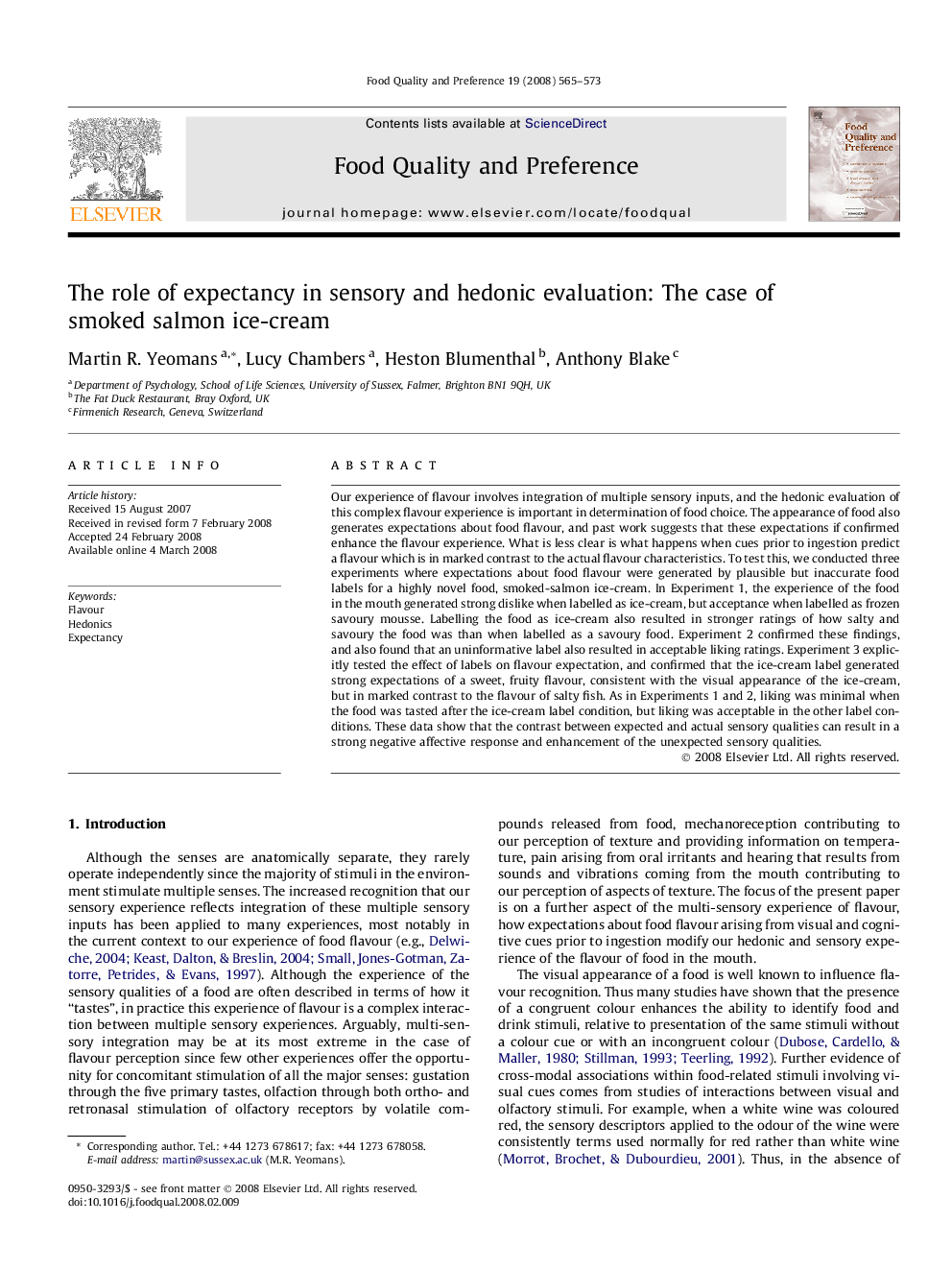| Article ID | Journal | Published Year | Pages | File Type |
|---|---|---|---|---|
| 4317977 | Food Quality and Preference | 2008 | 9 Pages |
Our experience of flavour involves integration of multiple sensory inputs, and the hedonic evaluation of this complex flavour experience is important in determination of food choice. The appearance of food also generates expectations about food flavour, and past work suggests that these expectations if confirmed enhance the flavour experience. What is less clear is what happens when cues prior to ingestion predict a flavour which is in marked contrast to the actual flavour characteristics. To test this, we conducted three experiments where expectations about food flavour were generated by plausible but inaccurate food labels for a highly novel food, smoked-salmon ice-cream. In Experiment 1, the experience of the food in the mouth generated strong dislike when labelled as ice-cream, but acceptance when labelled as frozen savoury mousse. Labelling the food as ice-cream also resulted in stronger ratings of how salty and savoury the food was than when labelled as a savoury food. Experiment 2 confirmed these findings, and also found that an uninformative label also resulted in acceptable liking ratings. Experiment 3 explicitly tested the effect of labels on flavour expectation, and confirmed that the ice-cream label generated strong expectations of a sweet, fruity flavour, consistent with the visual appearance of the ice-cream, but in marked contrast to the flavour of salty fish. As in Experiments 1 and 2, liking was minimal when the food was tasted after the ice-cream label condition, but liking was acceptable in the other label conditions. These data show that the contrast between expected and actual sensory qualities can result in a strong negative affective response and enhancement of the unexpected sensory qualities.
